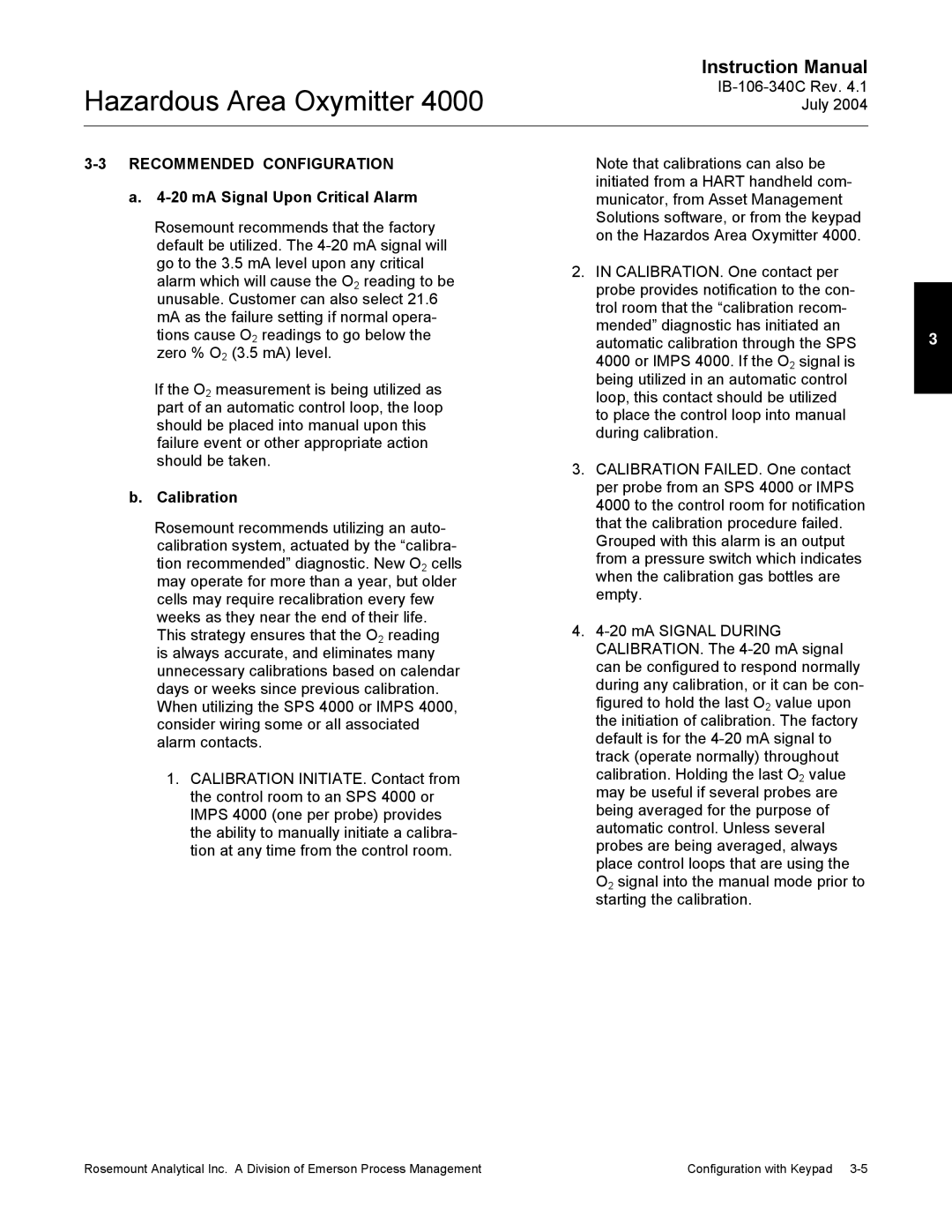
Hazardous Area Oxymitter 4000
Instruction Manual
Rosemount recommends that the factory default be utilized. The
If the O2 measurement is being utilized as part of an automatic control loop, the loop should be placed into manual upon this failure event or other appropriate action should be taken.
b. Calibration
Rosemount recommends utilizing an auto- calibration system, actuated by the “calibra- tion recommended” diagnostic. New O2 cells may operate for more than a year, but older cells may require recalibration every few weeks as they near the end of their life. This strategy ensures that the O2 reading is always accurate, and eliminates many unnecessary calibrations based on calendar days or weeks since previous calibration. When utilizing the SPS 4000 or IMPS 4000, consider wiring some or all associated alarm contacts.
1.CALIBRATION INITIATE. Contact from the control room to an SPS 4000 or IMPS 4000 (one per probe) provides the ability to manually initiate a calibra- tion at any time from the control room.
Note that calibrations can also be initiated from a HART handheld com- municator, from Asset Management Solutions software, or from the keypad on the Hazardos Area Oxymitter 4000.
2.IN CALIBRATION. One contact per probe provides notification to the con-
trol room that the “calibration recom- mended” diagnostic has initiated an
automatic calibration through the SPS 3 4000 or IMPS 4000. If the O2 signal is
being utilized in an automatic control loop, this contact should be utilized to place the control loop into manual during calibration.
3.CALIBRATION FAILED. One contact per probe from an SPS 4000 or IMPS 4000 to the control room for notification that the calibration procedure failed. Grouped with this alarm is an output from a pressure switch which indicates when the calibration gas bottles are empty.
4.
Rosemount Analytical Inc. A Division of Emerson Process Management | Configuration with Keypad |
